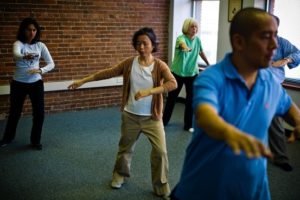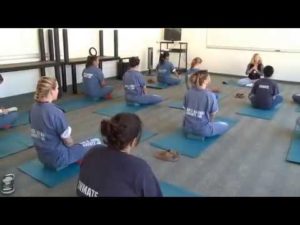Improve Sleep Problems in Adolescents with Mindfulness
By John M. de Castro, Ph.D.
“By taking this mindful attitude, sleep is facilitated by simply being aware of the moment-to-moment experience of relaxing into the bed, without judging or being critical of that experience, so that the mind can gently slip into sleep.“ – John Cline
Modern society has become more around-the-clock and more complex producing considerable pressure and stress on the individual. The advent of the internet and smart phones has exacerbated the problem. This stress may be amplified for adolescents. Adolescence can be a difficult time, fraught with challenges. During this time, the child transitions to young adulthood; including the development of intellectual, psychological, physical, and social abilities and characteristics. There are so many changes occurring during this time that the child can feel stressed and overwhelmed and unable to cope with all that is required.
The resultant stress can impair sleep. It is estimated that 14% of adolescents experience insomnia and 5.3% meet the diagnostic criteria for a sleep disorder. Insomnia is more than just an irritant. Sleep deprivation is associated with decreased alertness and a consequent reduction in performance of even simple tasks, decreased quality of life, increased difficulties with memory and problem solving, and increased likelihood of accidental injury including automobile accidents. It also can lead to anxiety about sleep itself. This is stressful and can produce even more anxiety about being able to sleep. About 4% of Americans revert to sleeping pills. But, these do not always produce high quality sleep and can have problematic side effects, including potential addiction. So, there is a need to find better methods to treat insomnia. Contemplative practices have been reported to improve sleep amount and quality and help with insomnia. The importance of insomnia underscores the need to further investigate safe and effective alternatives to drugs for adolescents.
In today’s Research News article “The SENSE Study: Treatment mechanisms of a cognitive behavioral and mindfulness-based group sleep improvement intervention for at-risk adolescents.” (See summary below) Blake and colleagues recruited adolescents (mean age 14.5 years) from schools who had clinically significant anxiety and sleep disorder. They randomly assigned them to receive either 7 weekly 90-minute group sessions of a mindfulness-based sleep improvement program or study skills education. The sleep improvement intervention employs a cognitive behavioral approach, incorporating sleep education, sleep hygiene, stimulus control, and cognitive restructuring, with added mindfulness, savoring, and anxiety specific components. Participants were encouraged to continue practice at home. The adolescents were measured before and after treatment for sleep (actiwatch and self-report), anxiety, and pre-sleep arousal.
They found that after the intervention, in comparison to the study skills education group, the mindfulness-based sleep improvement group had significantly improved sleep, measured objectively with actiwatch or subjectively with self-report, better sleep hygiene awareness, lower anxiety, pre-sleep somatic arousal, and less pre-sleep cognitive arousal. Using a sophisticated statistical technique, they found that the improvements in sleep and anxiety were produced as a result of the improvements in pre-sleep somatic arousal, and pre-sleep cognitive arousal.
These are exciting results, particularly as the effect sizes were moderate to large and anxiety and sleep disruption are so prevalent in adolescents. This suggests that the mindfulness-based group sleep improvement intervention produces big improvements in a significant problem for adolescents. They further suggest that these improvements were mediated by improvements in pre-sleep arousal levels. So, the mindfulness-based group sleep improvement intervention appears to relax the adolescents so that they can sleep better. Mindfulness training has been shown to reduce the physiological and psychological responses to stress, reduce anxiety levels, and improve emotion regulation. So, these effects on arousal are not unexpected. But, the findings clearly suggest that improvements in mindfulness are very important to reduce anxiety and improve sleep in adolescents.
So, improve sleep problems in adolescents with mindfulness
“Mindfulness delivered improvements to sleep—including reduced insomnia, improved sleep quality, increased sleep time, and better sleep efficiency—that were comparable to sleep medication.” – Michael Breus
CMCS – Center for Mindfulness and Contemplative Studies
This and other Contemplative Studies posts are also available on Google+ https://plus.google.com/106784388191201299496/posts and on Twitter @MindfulResearch
Study Summary
Matthew Blake, Orli Schwartz, Joanna M. Waloszek, Monika Raniti, Julian G. Simmons, Greg Murray, Laura Blake, M.Teach., Ronald E. Dahl, M.D., Richard Bootzin, Dana L. McMakin, Paul Dudgeon, John Trinder, Nicholas B. Allen. The SENSE Study: Treatment mechanisms of a cognitive behavioral and mindfulness-based group sleep improvement intervention for at-risk adolescents. Sleep 2017 zsx061. doi: 10.1093/sleep/zsx061
Abstract
OBJECTIVE:
The aim of this study was to test whether a cognitive-behavioral and mindfulness-based sleep intervention could improve sleep and anxiety on school nights in a group of at-risk adolescents. We also examined whether benefits to sleep and anxiety would be mediated by improvements in sleep hygiene awareness and pre-sleep hyperarousal.
METHOD:
Secondary analysis of a randomized controlled trial conducted with 123 adolescent participants (Female=60%; Mean Age=14.48) who had high levels of sleep problems and anxiety symptoms. Participants were randomized into a sleep improvement intervention (n=63) or active control ‘study skills’ intervention (n=60). Pre-and-post intervention, participants completed the Pittsburgh Sleep Quality Index (PSQI), Spence Children’s Anxiety Scale (SCAS), Sleep Beliefs Scale (SBS), and Pre-Sleep Hyperarousal Scale (PSAS), and wore an actiwatch and completed a sleep diary for five school nights.
RESULTS:
The sleep intervention condition was associated with significantly greater improvements in actigraphy-measured sleep onset latency (SOLobj), sleep diary measured sleep efficiency (SEsubj), PSQI, SCAS, SBS, and PSAS, with medium-large effect sizes. Improvements in the PSQI and SCAS were specifically mediated by the measured improvements in PSAS that resulted from the intervention. Improvements in SOLobj and SEsubj were not specifically related to improvements in any of the putative treatment mechanisms.
CONCLUSION:
This study provides evidence that pre-sleep arousal but not sleep hygiene awareness is important for adolescents’ perceived sleep quality, and could be a target for new treatments of adolescent sleep problems.









